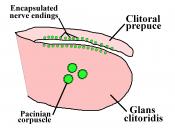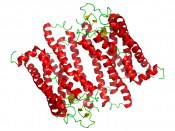Sensory stimulation is a chemical process which occurs between the human body and brain. When we experience sensation, our body is exposed to some type of sensory stimulation. The sensory receptors then receive this information, and transmit it to the brain using neural impulses, or neurotransmitters. There it is interpreted into the correct sensation. Sensations are the basic building blocks of perception. Perception is the process of organizing and making sense of our sensory input. Perception allows us to better interpret the information our sensory receptors receive, and form images of the world around us. Transduction is what happens when the receptors transform the energies they receive into a form that can be interpreted and utilized by the nervous system.
Human beings are able to experience various sensations because the nervous system encodes the messages we are receiving and interpreting. In his doctrine of specific nerve energies, Johannes Muller theorizes that different sensory modes exist because the information received by our sensory receptors stimulates different synapses when traveling back to the brain.
This is known as anatomical encoding. This type of encoding determines which sensory organ is activated by a certain type of stimulation, according to which specific neural pathway it travels. (Wade, Tavris, 2006).
Anatomical encoding does not totally explain how or why our different sensory modalities exist independently. Scientists found it difficult to link specific skin senses to individual neural pathways; neither does the doctrine of specific nerve energies explain variations of stimulus within a certain sensory experience, i.e. the softness of an animal's fur versus the coarseness of sandpaper, or the distinction between the colors light blue and dark blue. A second type of encoding, called functional encoding, is therefore required to make sense of these differentials in our sensory perception. According to Wade and Tavris,


